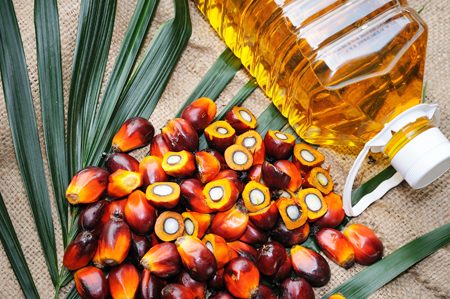Indonesian Planters See Drought Hitting Palm Oil Output
Category: Oilseeds

(Reuters) – Leading palm oil players in Indonesia see production growth being hit in the short to medium term, as the world’s top grower of the edible oil faces drought across major planting regions that is expected to delay fruit ripening and lower output.
Drought has hit large parts of the archipelago as a mild El Nino disrupts the dry season, weather officials say, with its peak now expected to run from mid-August to mid-September. The number of hotspots have also been increasing.
Four of the seven local planters that Reuters spoke to said they expect third-quarter production to chart flat-to-slower growth compared to the previous quarter, as they are already seeing a delay in fruit ripening. But the other three said this effect would only be seen within the first half of next year.
A prolonged drought usually causes lower fresh fruit bunch production and may hit oil extraction during harvest in the next 6-12 months, said Pinta S. Chandra, investor relations, Sinar Mas Agribusiness and Food.
“It’s been so dry you can see unopened spears (on the trees),” said a plantation manager at a company that owns estates in both Indonesia and Malaysia, on condition of anonymity as he is not authorized to speak to media. But he added it was not as severe as the El Nino weather pattern in 2015.
The El Nino, a warming of the Eastern Pacific Ocean waters, brings dry weather across Southeast Asia and lowers palm yields in Indonesia and Malaysia. After the 2015 El Nino, Southeast Asian production fell the following year while prices rose over 3,000 ringgit.
“The weather will affect production in the third quarter, but we are not revising production targets,” said Tofan Mahdi, senior vice-president – communications, PT Astra Agro Lestari.
The company is expecting lower palm oil output this year from 1.94 million tonnes last year, he added.
Indonesian crude palm oil prices have also gained nearly 10% since the start of July, and was last at $500 a tonne on Monday.
Some planters, however, say the effects of the prolonged drought will be only seen in the first half of 2020 as fruit would only bear the dry weather impact 6-12 months later.
“The El Nino will not affect this year’s production, but next year’s harvest which is currently flowering,” said Mukti Sardjono, the executive director of the Indonesian Palm Oil Association (GAPKI).
“This year’s production is estimated to be higher than 2018, though the (annual) increase will not as big as in 2018,” he said, pegging palm and palm kernel oil’s 2019 output at 48-49 million tonnes.




